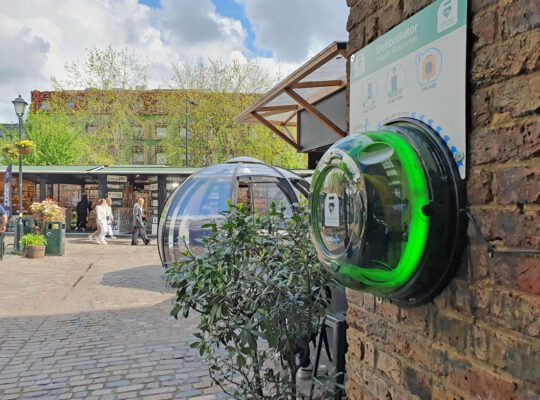Do You Need a Defibrillator (AED) At Work?
AEDs (Automated External Defibrillators), also called defibrillators or PADs (Publicly Accessible Defibrillators), are found in workplaces, schools, charity hubs, churches, sports venues, and other convenient spaces across the UK.
When researching whether your facilities need an AED on-site, it’s important that you properly assess the health needs of different users. It is also vital that you consider any legal implications of failing to install an AED on your premises.
Discover whether you need a defibrillator (AED), including any legal requirements, by reading on.
The Law on Publicly Accessible Defibrillators (PADs)
As of February 2022, there is currently no specific legislation that obliges business premises to have and store an AED in the UK. However, your business could be at risk of liability due to negligence if appropriate safety precautions are not taken.
According to the Resuscitation Council UK, there are two potential reasons why AED usage or lack of provision could be deemed against common law: whether it comes down to battery or negligence. Therefore, there is opportunity for civil liability claims and claims for compensation.
A claim under assault and/or battery
Resuscitation Council UK explains how that, despite a responder’s best intentions, if during resuscitation harm was inflicted onto the victim, then their family could seek compensation for assault and/or battery.
A charge is more likely to be brought against healthcare professionals than members of the public. However, the likelihood of such a claim happening is small, and is likely to be unsuccessful as the court would argue that a life saved is more important than an injury.
A claim under negligence
Negligence, or failing to act where duty of care is in place, such as in a hospital or medical setting, can only be applied if the family of the victim felt that the intervention taken left the person worse off, than if intervention had not happened.
However, in cases of Sudden Cardiac Arrest (SCA), intervention of any kind, whether CPR and/or AED usage, leads to survival rather than imminent death, such a claim would be hard to bring successfully.
If an AED was available, but was not working, or had not been properly maintained, then a claim could be brought for negligence. The Resuscitation Council UK describes “When an AED is provided in a workplace and used by a member of staff, it becomes work equipment to which the Provision and Use of Work Equipment Regulations 1998 in England, Wales and Scotland (1999 in Northern Ireland) apply. Failure to maintain the equipment or to train your staff in its use would be a breach of the regulations by the employer.”
Can I get sued for using a defibrillator?
No patient has successfully sued their rescuer for using a defibrillator. If somebody has suffered a SCA, you cannot make their condition worse by using a defibrillator, but instead you might save their life. HeartSine protection is second to none in the industry in providing comprehensive coverage to lay rescuers as well as on the key operational components of their devices.
How Do You Decide If You Need a Defibrillator (AED)?
You can decide whether you need a defibrillator by looking at the common risks of Sudden Cardiac Arrest, as well as your location. Everyone should have a defibrillator (AED) within a 2 minute brisk walk.
For example, if you are in an urban location up many flights of stairs, then an ambulance and paramedics will take time to arrive at your location due to traffic risks, as well as the need to travel through the building. For those in rural locations, having a centrally located AED can help to ensure that your hamlet, village or small group of houses is safer in the case of a cardiac arrest.
Common risks of Sudden Cardiac Arrest include history of coronary diseases, someone’s age (45 and up are considered higher risk), as well as whether someone has an existing disease such as diabetes or high blood pressure.
Aero Healthcare has written a series of guides on whether you may need an AED for your location, including specifics relevant to your sector. Read below.
How Do You Decide If You Need a Defibrillator (AED)?
You can decide whether you need a defibrillator by looking at the common risks of Sudden Cardiac Arrest, as well as your location. Everyone should have a defibrillator (AED) within a 2 minute brisk walk.
For example, if you are in an urban location up many flights of stairs, then an ambulance and paramedics will take time to arrive at your location due to traffic risks, as well as the need to travel through the building. For those in rural locations, having a centrally located AED can help to ensure that your hamlet, village or small group of houses is safer in the case of a cardiac arrest.
Common risks of Sudden Cardiac Arrest include history of coronary diseases, someone’s age (45 and up are considered higher risk), as well as whether someone has an existing disease such as diabetes or high blood pressure.
Aero Healthcare has written a series of guides on whether you may need an AED for your location, including specifics relevant to your sector. Read below.






